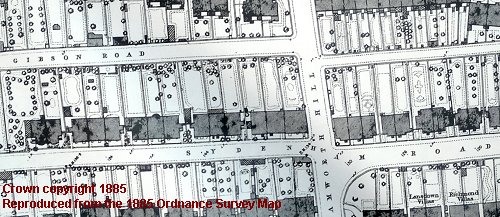Victorian & Edwardian Services (Houses) 1850-1914
1 Introduction
The nineteenth century witnessed a massive expansion of Britain’s urban population. In just one decade, between 1841 and 1851, English towns grew by 25.9 % and at the mid point of the century, 54% of the population lived in urban accommodation. Between 1851 and 1911, the population doubled whilst the urban population increased three times: by 1911, 79% of the population lived in towns. This represented a massive challenge to the British building industry and over the sixty year period from 1850, with fluctuations over time and variations from one locality to another, large areas of suburban housing were created. Over a hundred years later many Victorian and Edwardian areas of housing remain an essential feature of the British townscape.
The new suburbs were sharply socially segregated with marked differences in the quality of the housing and the level of services provided by the developer. Working class housing (see plan below) was typically situated close to the places of work and consisted largely of rows of densely packed terraced houses. Individual houses were small – typically four or six rooms – although some were smaller. Overcrowding was common.

The prosperous middle classes, on the other hand, sought to escape the smoke and smell of industry and the noise and dirt of humanity in new quiet residential areas. Large terraced houses, fashionable with the well to do in the first half of the century, fell from favour after 1850: instead, the preferred house type was the substantial detached or semi-detached villa with twelve rooms or more and sufficient space for servants to live and work separately from the family. Privacy and domestic comfort were of paramount importance to the Victorian middle class household.

It was not only the plan of the middle class villa – large enough to ensure virtually complete segregation of servants from the family – but the level and quality of services which distinguished them from the cottage homes of the industrial suburbs. The period 1850-1914, nevertheless, saw vast improvements in the services provided at all social levels. These were the result of a combination of technical innovations, rising expectations of standards of comfort and hygiene in the home and the effects of half a century of legislation commencing with the first Public Health Act of 1848.
except where acknowledged